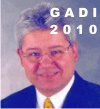Our paper for this year IADIS e-Learning 2010 Conference in Freiburg/ Germany about our Podcasting and Streaming Activities has been accepted. The title of the publication is „Capture Your University„.
Abstract:
This paper reflects the experiences of four years of managing (lecture) recording activities at Graz University of Technology (TU Graz), its history, development and management, its increase and evaluation as well as its future trends which have already set into life by launching Austria’s first iTunes U platform for a university of technology in November 2009. The paper recommends a way of implementing podcasting and streaming into university daily routine from a didactical point of view as well as in practice. The pros and cons of screening, streaming, live-streaming or simple capturing are being discussed in this context. Finally the next step to a university wide automated recording system is touched which is an unavoidable result of the successful way of podcasting TU Graz has decided to go.
Hopefully we meet each other there for fruitful discussions.





